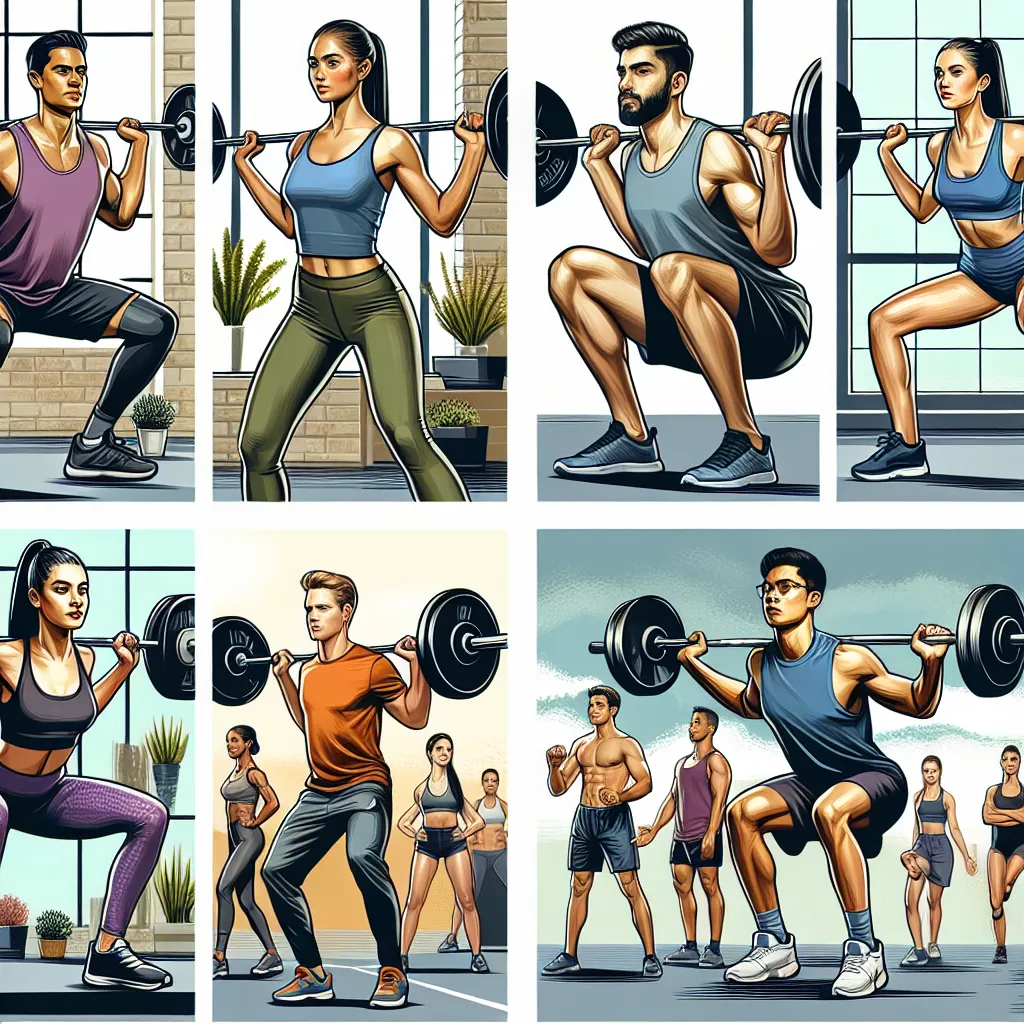Multi-joint exercises are a crucial concept in fitness and sports science, often appearing in IELTS reading passages and speaking topics related to health and physical education. Let’s explore this term in depth to enhance your vocabulary and prepare you for the IELTS exam.
Definition and Pronunciation
Multi-joint exercises (noun): Physical activities that involve movement at two or more joints simultaneously.
Pronunciation: /ˈmʌlti dʒɔɪnt ˈɛksəsaɪzɪz/
Context and Usage
Examples in Context
-
Squats are an excellent multi-joint exercise that engages the hips, knees, and ankles simultaneously.
Analysis: This sentence demonstrates how multi-joint exercises involve multiple joints working together. -
Fitness experts recommend incorporating multi-joint exercises into workout routines for maximum efficiency.
Analysis: Here, we see the term used in a recommendation context, highlighting its importance in fitness. -
The study revealed that multi-joint exercises led to greater overall strength gains compared to isolation exercises.
Analysis: This example shows the term used in a scientific context, comparing it to other types of exercises. -
Athletes often prefer multi-joint exercises as they mimic real-world movements more closely than single-joint exercises.
Analysis: This sentence illustrates the practical application of multi-joint exercises in athletic training. -
In rehabilitation programs, therapists gradually introduce multi-joint exercises to improve functional mobility.
Analysis: This example demonstrates the use of the term in a medical or therapeutic context.

Common Contexts
Multi-joint exercises are frequently discussed in:
- Fitness and workout planning
- Sports science and athletic training
- Physical therapy and rehabilitation
- Health and wellness articles
- Exercise physiology research
Frequency in IELTS
In IELTS exams, “multi-joint exercises” may appear in:
- Reading passages about health, fitness, or sports science (high frequency)
- Listening sections discussing workout routines or physical therapy (moderate frequency)
- Speaking tasks related to health and exercise (moderate frequency)
- Writing Task 2 essays on topics like public health or fitness trends (low to moderate frequency)
Vocabulary Analysis
Word Structure
- Multi-: prefix meaning “many” or “multiple”
- Joint: noun referring to a connection between bones
- Exercises: plural noun referring to physical activities
Synonyms and Related Terms
- Compound exercises
- Complex movements
- Functional exercises
- Integrated exercises
- Full-body movements
Antonyms and Contrasting Terms
- Isolation exercises
- Single-joint exercises
- Targeted movements
- Specialized exercises
Memory Techniques
Mind Mapping
Create a mind map with “Multi-Joint Exercises” at the center, branching out to:
- Types (e.g., squats, deadlifts, push-ups)
- Benefits (e.g., time-efficient, functional strength)
- Muscle groups involved (e.g., legs, back, chest)
- Contrasting exercises (e.g., bicep curls, leg extensions)
Storytelling Technique
Imagine a superhero named “Multi-Joint Man” who gains his strength by performing exercises that engage multiple joints at once. His archnemesis, “Isolation Ivan,” only focuses on one muscle at a time and is always defeated in strength contests.
Practice Exercises
-
Gap-fill exercise:
Complete the sentence: “ exercises like deadlifts and bench presses are more effective for building overall strength than exercises like bicep curls.”
(Answer: Multi-joint, isolation) -
IELTS Writing Task 2 practice:
Topic: Some people believe that focusing on multi-joint exercises is the most efficient way to improve overall fitness. To what extent do you agree or disagree? -
IELTS Speaking Part 2 task:
Describe a type of exercise you enjoy. You should say:- What the exercise is
- How often you do it
- Why you enjoy it
- And explain whether it’s a multi-joint or isolation exercise
-
Vocabulary expansion:
List five multi-joint exercises and describe which joints are involved in each. -
Reading comprehension:
Read a short passage about the benefits of multi-joint exercises and answer questions about the main ideas and supporting details.
Conclusion
Understanding and being able to discuss multi-joint exercises is valuable for the IELTS exam, particularly in health and fitness-related topics. By mastering this term and its related vocabulary, you’ll be better equipped to handle various tasks across all sections of the IELTS test. Remember to practice using this term in context, and try to incorporate it into your speaking and writing exercises regularly.
We encourage you to share your experiences with multi-joint exercises or any questions you may have about using this term in the comments section below. How might you use “multi-joint exercises” in a sentence related to health or fitness?